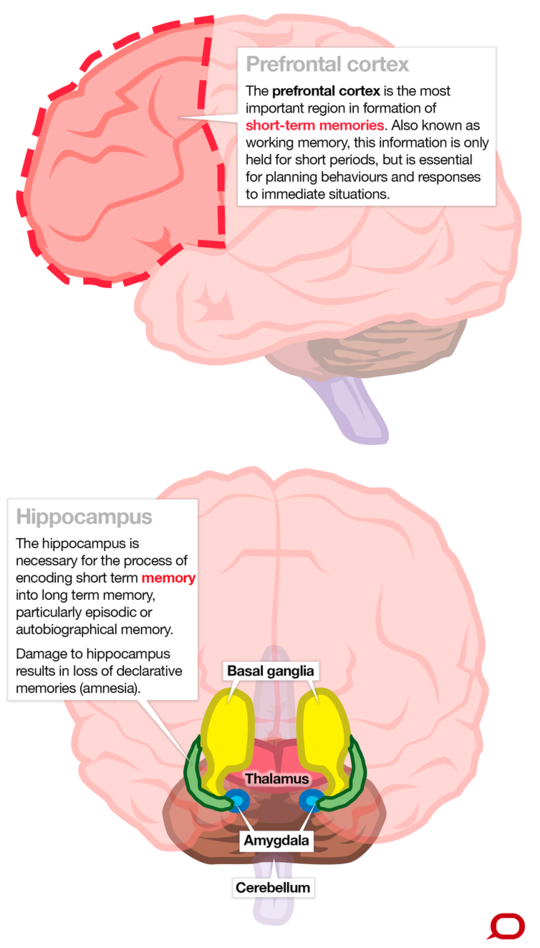
Human memory is complex and neuroscientists are still trying to uncover the mechanisms that lead to memories being formed. Viki Reed/Flickr, CC BY
One of the critical functions of the brain is to encode and store information, which becomes our memories. Our memories provide us with insight into events and knowledge of the world around us and influence our actions and behaviours – forming important aspects of our personality.
There are multiple aspects and types of memories. What we usually think of as “memory” in daily usage is actually long-term memory. But there are also important short-term and sensory memory processes, which are required before a long-term memory can be established.
Memory is generally divided into two broad categories: explicit (declarative) and implicit (non-declarative) memory.
Implicit memories
Implicit, or non-declarative, memories are behaviours that we have learned, but cannot verbalise. These memories typically operate without conscious awareness, encompassing skills, habits and behaviours.
These behaviours run on auto-pilot – for example, tying your shoelaces. It’s easy to do once learned, but it is very difficult to tell someone how you perform this task.
Multiple areas of the brain form implicit memories as they involve a variety of responses to be co-ordinated. A key region of the brain called the basal ganglia is involved in the formation of these “motor” programs. Additionally, the cerebellum at the back of the skull plays a vital role in the timing and execution of learned, skilled motor movement.
Explicit memories
Explicit, or declarative, memories can be verbally expressed. These include memories of facts and events, and spatial memories of locations. These memories can be consciously recalled and can be autobiographical – for instance, what you did for your last birthday – or conceptual, such as learning information for an exam.
These memories are easy to acquire. However, they are also easy to forget as they are susceptible to disruption during the process of forming and storing the information.

The Conversation, CC BY-ND
Making long-term memories
There are multiple stages to forming an enduring memory, and information can be lost (or forgotten) along the way. The multistore model of memory proposes that long-term memories are made in three stages. Incoming information is transferred through sensory memory to short-term memory and then to long-term memory, rather than happening in one go.
The different types of memory each have their own particular mode of operation, but they all co-operate in the process of memorisation and can be seen as three necessary steps in forming a lasting memory.
The information encoded in each of these steps has its own duration. First, we must be paying attention to the information we are going to encode – this is sensory memory. Our attention switches all the time, so the incoming information is often fleeting – like a snapshot – but it contains details of sounds, sensations and images.
Short-term memory, or working memory, is stored for seconds to minutes, and has a very limited information capacity. Due to the limited capacity, working memory must “dump” information regularly. Unless this information is transferred to the long-term store it will be forgotten.
An example is being required to remember a phone number, which can be remembered for a short time, but is soon forgotten. But if this information is rehearsed by repetition, this information can pass into long-term memory, which has a seemingly infinite storage capacity. This means information can be accessed for a much longer duration.
Our long-term memories are the recollections of our lives. For example, that phone number might be linked to our family home and be remembered for years into the future.
Many areas of the brain play a role in the formation and storage of declarative memory, but the two main regions involved are the hippocampus, the emotion centre, and the prefrontal cortex at the very front of the brain.

The Conversation, CC BY-ND
The prefrontal cortex and working memory
The prefrontal cortex is important in the formation of short-term or working memory. Although these short-term memories are lost due to interference with new incoming information, they are essential for planning behaviours and deciding what actions to perform based on the current situation.
The hippocampus and long-term memory
A short-term memory can be consolidated into an enduring long-term memory. This involves a system of brain structures within the medial temporal lobe that are essential for forming declarative memories. The hippocampus is a key region in the medial temporal lobe, and processing information through the hippocampus is necessary for the short-term memory to be encoded into a long-term memory.
The long-term memory does not remain stored permanently in the hippocampus. These long-term memories are important and having them stored in only one brain location is risky – damage to that area would result in the loss of all of our memories.
Instead, it is proposed that long-term memories become integrated into the cerebral cortex (responsible for the higher order functions that make us human). This process is referred to as cortical integration; it protects the information stored in the brain.
However, damage to areas of the brain, particularly the hippocampus, results in loss of declarative memories, which is known as amnesia.

Rehearsing items of short-term memory can pass these into our long-term memory, which has a seemingly infinite capacity for storage. g_leon_h/Flickr, CC BY
The famous case study of “H.M.” - Henry Molaison (born February 26, 1926, and died December 2, 2008) - demonstrated the hippocampus is vital to the formation of long-term memories. H.M. had his hippocampus removed as a 23-year-old in an attempt to treat epileptic seizures that originated in his medial temporal lobe.
Removal of the temporal lobe, including the hippocampus, led to the inability to form new memories, known as anterograde amnesia. However H.M.‘s short-term and procedural memory (knowing how to do things, like motor skills) remained intact, as did many of his memories before the surgery.
The deteriorating brain
Alzheimer’s disease patients develop brain pathologies that damage neurons, particularly in the hippocampus. These are called neurofibrillary tangles and amyloid-beta plaques. Amyloid plaques disrupt communication between neurons. Neurofibrillary tangles damage the neuron’s transport system, killing the cells.
Damage to neurons in the hippocampus prevents the formation of new memories and also disrupts neurons that have formed networks encoding existing memories. This leads to the loss of these memories, called retrograde amnesia.
As the die-off of neurons increases, affected brain regions begin to shrink and waste away. By the final stages of Alzheimer’s, damage is widespread and much brain tissue is lost.
Functionally, Alzheimer’s disease patients lose more and more memories, including elements of language and important information about their lives. Procedural memories (motor skills) are the last ability to be destroyed.
Human memory is complex, and neuroscientists are still trying to uncover the mechanisms that lead to memories being formed. New scientific techniques are gradually allowing the examination of how memories are encoded and stored, but, as yet, the surface of the mind and the memories it contains have only just been examined.
About the Author
Amy Reichelt, Lecturer, ARC DECRA, RMIT University
This article is republished from The Conversation under a Creative Commons license. Read the original article.

Related Books:
Atomic Habits: An Easy & Proven Way to Build Good Habits & Break Bad Ones
by James Clear
Atomic Habits provides practical advice for developing good habits and breaking bad ones, based on scientific research on behavior change.
Click for more info or to order
The Four Tendencies: The Indispensable Personality Profiles That Reveal How to Make Your Life Better (and Other People's Lives Better, Too)
by Gretchen Rubin
The Four Tendencies identifies four personality types and explains how understanding your own tendencies can help you improve your relationships, work habits, and overall happiness.
Click for more info or to order
Think Again: The Power of Knowing What You Don't Know
by Adam Grant
Think Again explores how people can change their minds and attitudes, and offers strategies for improving critical thinking and decision making.
Click for more info or to order
The Body Keeps the Score: Brain, Mind, and Body in the Healing of Trauma
by Bessel van der Kolk
The Body Keeps the Score discusses the connection between trauma and physical health, and offers insights into how trauma can be treated and healed.
Click for more info or to order
The Psychology of Money: Timeless lessons on wealth, greed, and happiness
by Morgan Housel
The Psychology of Money examines the ways in which our attitudes and behaviors around money can shape our financial success and overall well-being.


























